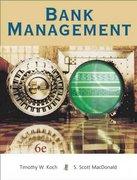Question
tudent questionTime to preview question:00:09:38 A. The inverse demand for organic dog food is given by P 1 = 28 - 2Q 1 , and
tudent questionTime to preview question:00:09:38
A.
The inverse demand for organic dog food is given by P1 = 28 - 2Q1, and the inverse demand for conventional dog food is given by P2 = 14 - Q2, where P is the price of dog food in USD/lb, and Q is the quantity of dog food in thousand pounds. The cost of producing dog food is C(Q) = 2Q. The profit-maximizing quantity of organic dog food is equal to (1000s):
Group of answer choices
A. 2
B. 8
C. 6.5
D. 6
B.
The inverse demand for organic dog food is given by P1 = 28 - 2Q1, and the inverse demand for conventional dog food is given by P2 = 14 - Q2, where P is the price of dog food in USD/lb, and Q is the quantity of dog food in thousand pounds. The cost of producing dog food is C(Q) = 2Q. The profit-maximizing price of organic dog food is equal to:
Group of answer choices
A. 10
B. 15
C. 8
D.6
C.
The inverse demand for organic dog food is given by P1 = 28 - 2Q1, and the inverse demand for conventional dog food is given by P2 = 14 - Q2, where P is the price of dog food in USD/lb, and Q is the quantity of dog food in thousand pounds. The cost of producing dog food is C(Q) = 2Q. The profit-maximizing level of profits of organic dog food is equal to:
Group of answer choices
A. 60.5
B. 84.5
C. 56
D. 38
D.
The inverse demand for organic dog food is given by P1 = 28 - 2Q1, and the inverse demand for conventional dog food is given by P2 = 14 - Q2, where P is the price of dog food in USD/lb, and Q is the quantity of dog food in thousand pounds. The cost of producing dog food is C(Q) = 2Q. The profit-maximizing quantity of conventional dog food is equal to (1000s):
Group of answer choices
A. 5
B. 3
C. 6
D. 2
E.
The inverse demand for organic dog food is given by P1 = 28 - 2Q1, and the inverse demand for conventional dog food is given by P2 = 14 - Q2, where P is the price of dog food in USD/lb, and Q is the quantity of dog food in thousand pounds. The cost of producing dog food is C(Q) = 2Q. The profit-maximizing price of conventional dog food is equal to:
Group of answer choices
A. 2
B. 7
C. 8
D. 9
F.
The inverse demand for organic dog food is given by P1 = 28 - 2Q1, and the inverse demand for conventional dog food is given by P2 = 14 - Q2, where P is the price of dog food in USD/lb, and Q is the quantity of dog food in thousand pounds. The cost of producing dog food is C(Q) = 2Q. The profit-maximizing profit level of conventional dog food is equal to:
Group of answer choices
A. 14
B. 32
C.25
D.36
Step by Step Solution
There are 3 Steps involved in it
Step: 1

Get Instant Access to Expert-Tailored Solutions
See step-by-step solutions with expert insights and AI powered tools for academic success
Step: 2

Step: 3

Ace Your Homework with AI
Get the answers you need in no time with our AI-driven, step-by-step assistance
Get Started


